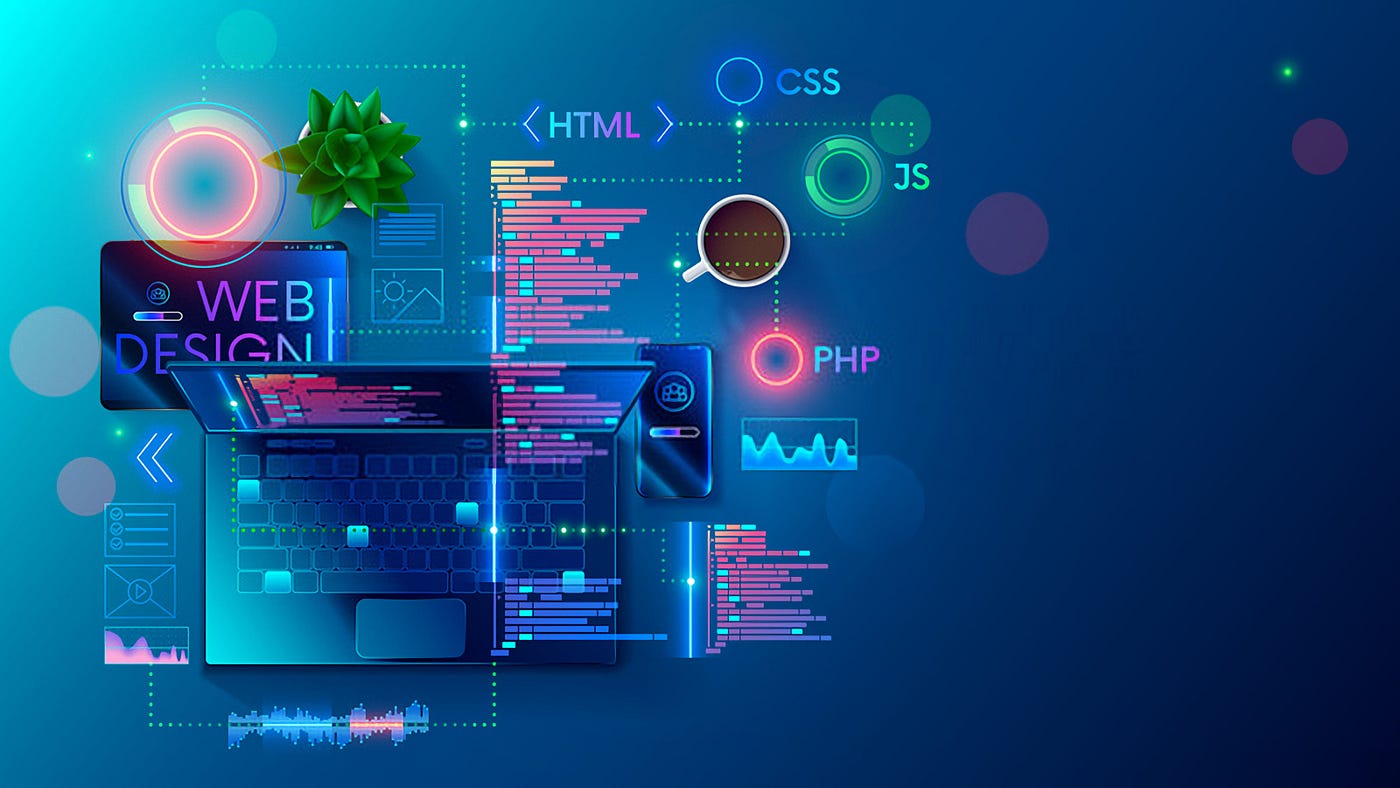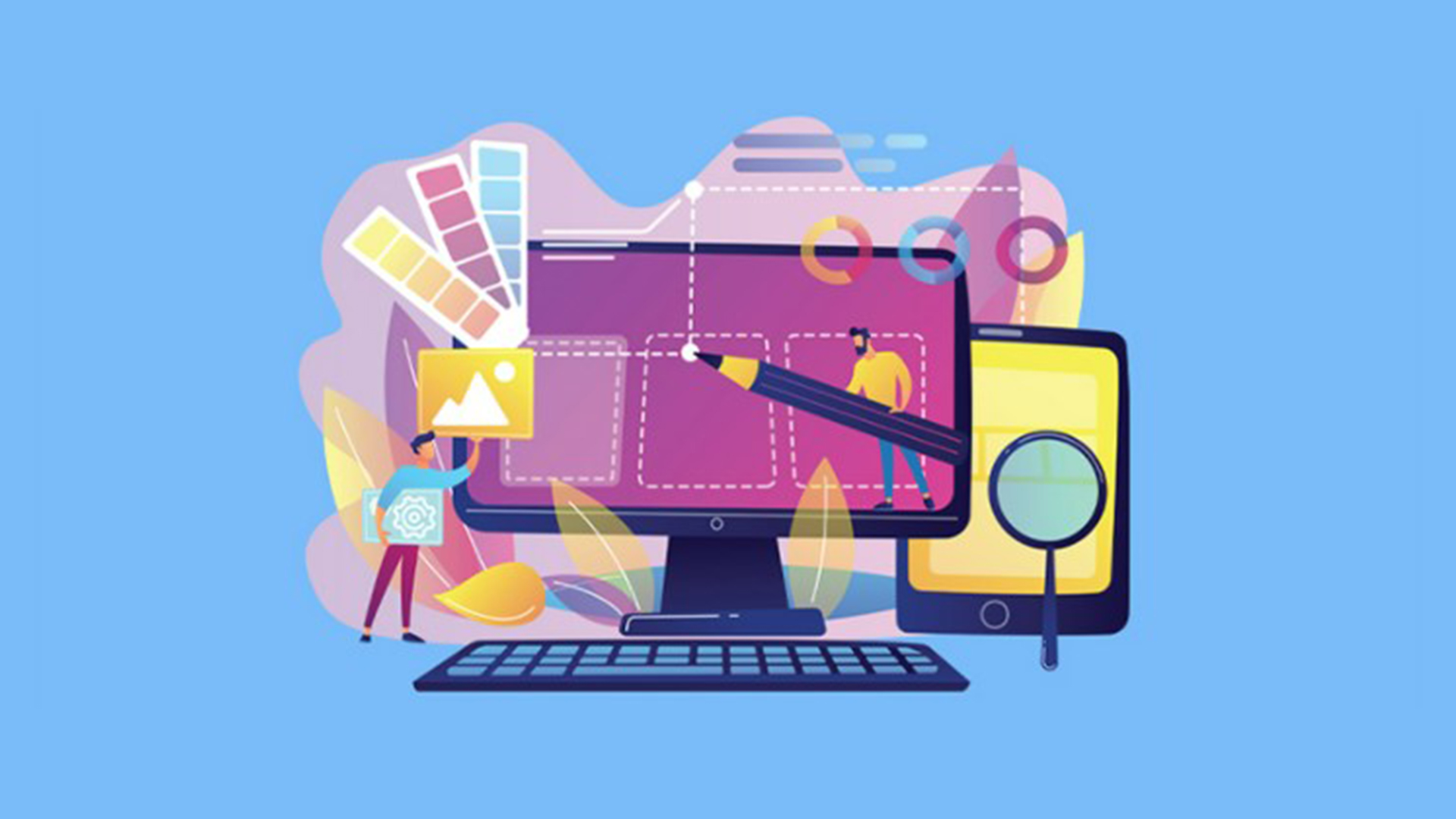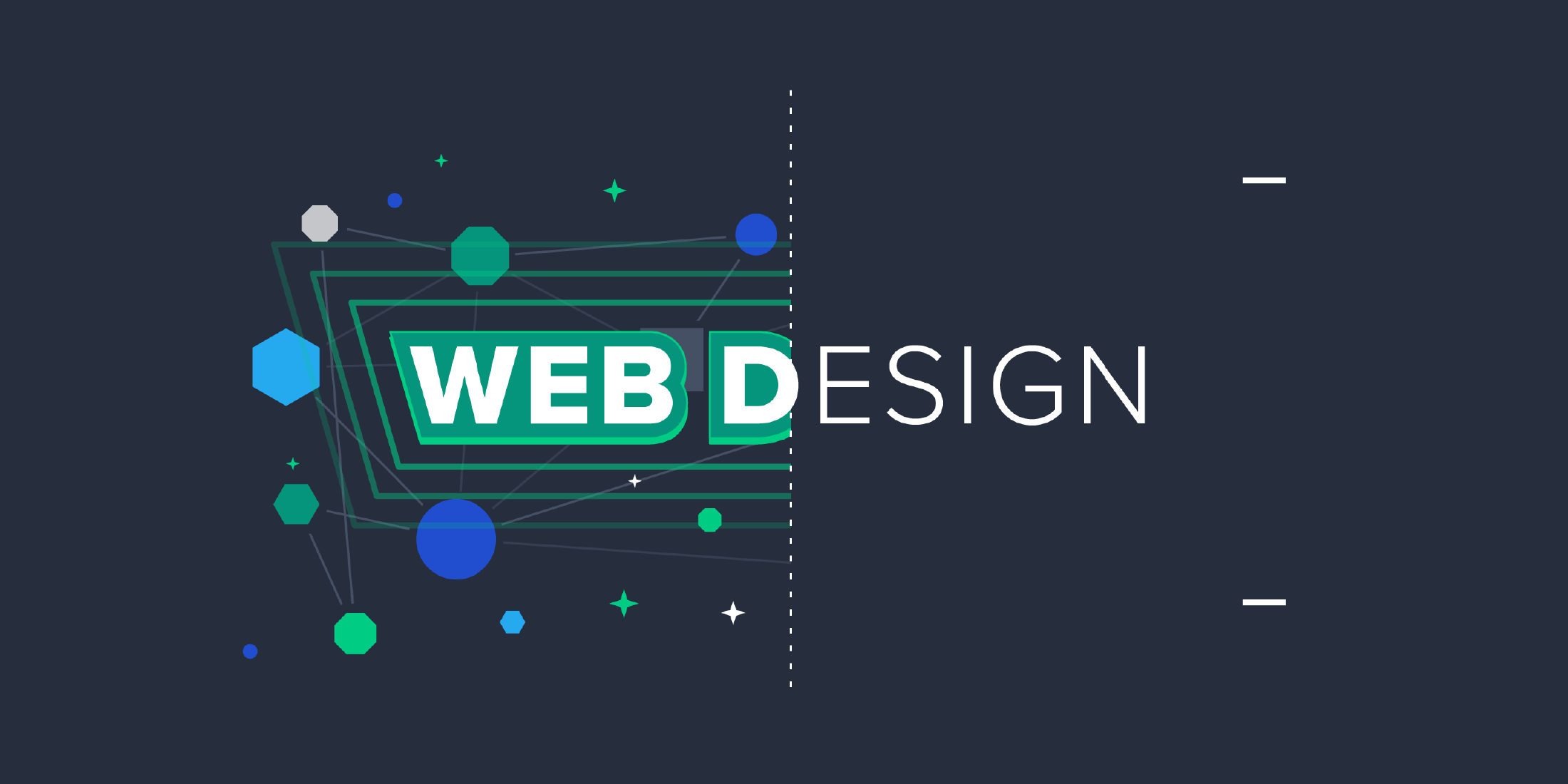All Categories
Featured
Table of Contents
- – Top 30 Web Design Companies - Apr 2022 - Desig...
- – Figma: The Collaborative Interface Design Too...
- – Why Is Web Design Important? - 6 Reasons To I...
- – The Top 10 Most Important Elements Of A Websi...
- – Web Design & Seo By Acs - Syracuse Web Design...
- – Custom Website Design And Marketing - Inmotio...
- – Collaborate & Create Amazing Graphic Design ...
- – Why Good Web Design Is Important, And Why Yo...
- – Web Design Software By Xara Tips and Tricks:
- – Web Design - The First 100 Years - Idle Word...
- – 12 Essential Tips For Improving Your Web Des...
Top 30 Web Design Companies - Apr 2022 - Designrush Tips and Tricks:
Quick summary Functionality and the utility, not the visual design, determine the success or failure of a website. Considering that the visitor of the page is the only person who clicks the mouse and therefore decides whatever, user-centric design has developed as a standard method for successful and profit-oriented website design - web design frederick md.
and the utility, not the visual design, identify the success or failure of a website. Given that the visitor of the page is the only person who clicks the mouse and therefore chooses whatever, user-centric design has ended up being a standard technique for successful and profit-oriented website design. After all, if users can't utilize a feature, it might as well not exist.
g. where the search box should be put) as it has currently been performed in a number of short articles; rather we concentrate on the approaches which, used properly, can lead to more sophisticated style decisions and streamline the procedure of perceiving provided information. Please discover that you might be interested in the usability-related posts we've published before: Principles Of Excellent Site Style And Effective Web Style Standards, In order to utilize the principles correctly we initially need to understand how users connect with websites, how they think and what are the fundamental patterns of users' behavior.
Figma: The Collaborative Interface Design Tool. Tips and Tricks:
Visitors glimpse at each brand-new page, scan some of the text, and click on the first link that catches their interest or slightly resembles the important things they're searching for. In fact, there are large parts of the page they do not even look at. The majority of users search for something interesting (or beneficial) and clickable; as quickly as some appealing candidates are found, users click.
If a page provides users with high-quality content, they are ready to jeopardize the material with ads and the style of the website. This is the reason that not-that-well-designed websites with high-quality material get a great deal of traffic over years. Content is more essential than the style which supports it.

Really simple principle: If a site isn't able to meet users' expectations, then designer failed to get his job done appropriately and the company loses cash. The higher is the cognitive load and the less instinctive is the navigation, the more ready are users to leave the website and search for options.
Why Is Web Design Important? - 6 Reasons To Invest In Site ... Tips and Tricks:
Neither do they scan web page in a direct fashion, going sequentially from one website area to another one. Rather users satisfice; they choose the first reasonable option. As quickly as they discover a link that looks like it might result in the objective, there is a great chance that it will be right away clicked.
It does not matter to us if we understand how things work, as long as we can use them. If your audience is going to act like you're developing billboard, then style great billboards." Users wish to have the ability to control their internet browser and count on the consistent data discussion throughout the website.
If the navigation and website architecture aren't instinctive, the number of enigma grows and makes it harder for users to comprehend how the system works and how to get from point A to point B. A clear structure, moderate visual hints and quickly identifiable links can help users to find their path to their objective.
The Top 10 Most Important Elements Of A Website Design Tips and Tricks:

claims to be "beyond channels, beyond products, beyond circulation". What does it indicate? Since users tend to check out sites according to the "F"-pattern, these 3 statements would be the very first elements users will see on the page once it is packed. The design itself is easy and instinctive, to comprehend what the page is about the user requires to browse for the response.
When you've accomplished this, you can communicate why the system is beneficial and how users can benefit from it. Do Not Misuse Users' Perseverance, In every job when you are going to use your visitors some service or tool, attempt to keep your user requirements minimal.
Novice visitors want to, not filling long web kinds for an account they may never use in the future. Let users explore the site and discover your services without requiring them into sharing private information. It's not reasonable to require users to enter an email address to test the feature.
Web Design & Seo By Acs - Syracuse Web Design - Google ... Tips and Tricks:
Stikkit is a best example for an user-friendly service which requires nearly absolutely nothing from the visitor which is inconspicuous and comforting. And that's what you desire your users to feel on your web site. Obviously, Mite needs more. The registration can be done in less than 30 seconds as the form has horizontal orientation, the user doesn't even need to scroll the page.
A user registration alone suffices of an obstacle to user navigation to minimize inbound traffic. 3. Handle To Focus Users' Attention, As sites provide both static and dynamic material, some aspects of the interface draw in attention more than others do. Clearly, images are more distinctive than the text simply as the sentences marked as vibrant are more appealing than plain text.
Focusing users' attention to particular areas of the site with a moderate usage of visual aspects can help your visitors to get from point A to point B without thinking of how it really is supposed to be done. The less enigma visitors have, the they have and the more trust they can develop towards the business the website represents.
Custom Website Design And Marketing - Inmotion Hosting Tips and Tricks:
4. Make Every Effort For Feature Exposure, Modern website design are typically criticized due to their approach of assisting users with visually appealing 1-2-3-done-steps, big buttons with visual effects and so on. From the design viewpoint these elements in fact aren't a bad thing. On the contrary, such as they lead the visitors through the site content in a very simple and easy to use way.
The site has 9 primary navigation choices which are visible at the first glance. The option of colors may be too light, though. is an essential concept of successful interface style. It does not really matter how this is accomplished. What matters is that the content is well-understood and visitors feel comfy with the method they connect with the system.
Instead a price: simply what visitors are looking for. An optimal service for reliable writing is touse brief and concise phrases (come to the point as quickly as possible), usage scannable layout (categorize the material, use several heading levels, utilize visual elements and bulleted lists which break the flow of consistent text blocks), usage plain and objective language (a promotion does not need to sound like advertisement; give your users some sensible and unbiased reason why they ought to use your service or stay on your site)6.
Collaborate & Create Amazing Graphic Design For Free Tips and Tricks:
Users are seldom on a site to delight in the design; additionally, for the most part they are searching for the information in spite of the design - web design frederick md. Pursue simplicity instead of complexity. From the visitors' point of view, the finest site design is a pure text, with no advertisements or further content blocks matching precisely the question visitors used or the content they have actually been looking for.
Finch clearly provides the information about the website and provides visitors an option of alternatives without overcrowding them with unneeded content. Not only does it assist to for the visitors, however it makes it possible to view the details presented on the screen.
Complex structures are more difficult to read, scan, evaluate and deal with. If you have the choice between separating two style sections by a noticeable line or by some whitespace, it's typically much better to utilize the whitespace service. (Simon's Law): the much better you handle to provide users with a sense of visual hierarchy, the simpler your material will be to perceive.
Why Good Web Design Is Important, And Why You Need It Tips and Tricks:
The exact same conventions and rules must be applied to all elements.: do the most with the least amount of cues and visual aspects. Clarity: all components need to be designed so their significance is not uncertain.
Conventions Are Our Good friends, Traditional design of site aspects does not result in a boring web website. As they decrease the finding out curve, the requirement to figure out how things work. For example, it would be an use problem if all sites had various visual presentation of RSS-feeds. That's not that different from our regular life where we tend to get used to standard principles of how we arrange data (folders) or do shopping (positioning of items).
understand what they're getting out of a website navigation, text structure, search positioning etc. A case in point from usability sessions is to equate the page in Japanese (assuming your web users don't know Japanese, e. g. with Babelfish) and supply your functionality testers with a task to discover something in the page of various language.
Web Design Software By Xara Tips and Tricks:
Test Early, Test Frequently, This so-called TETO-principle must be applied to every web style task as use tests often provide into substantial issues and concerns related to a given design. Test not too late, not too little and not for the wrong reasons.
Some essential points to remember: according to Steve Krug, and testing one user early in the task is much better than screening 50 near the end. Accoring to Boehm's first law, errors are most regular throughout requirements and design activities and are the more expensive the later on they are removed.
That suggests that you design something, test it, repair it and then test it again. There might be issues which have not been discovered during the first round as users were virtually obstructed by other problems.
Web Design - The First 100 Years - Idle Words Tips and Tricks:

This holds for designers. After you have actually worked on a website for few weeks, you can't observe it from a fresh perspective any longer. You understand how it is built and therefore you know exactly how it works you have the knowledge independent testers and visitors of your site would not have.
It can be connected to other locations such as graphic design, user experience, and multimedia arts, however is more aptly seen from a technological viewpoint. It has actually become a large part of individuals's everyday lives. It is hard to think of the Web without animated graphics, various designs of typography, background, videos and music.

During 1991 to 1993 the World Wide Web was born. Text-only pages could be seen utilizing a simple line-mode internet browser. In 1993 Marc Andreessen and Eric Bina, developed the Mosaic internet browser. At the time there were numerous browsers, however most of them were Unix-based and naturally text heavy. There had been no integrated approach to graphic style elements such as images or noises.
12 Essential Tips For Improving Your Web Design In 2022 Tips and Tricks:
The W3C was developed in October 1994 to "lead the Web to its complete potential by establishing typical protocols that promote its development and ensure its interoperability." This prevented any one business from monopolizing a propriety browser and shows language, which could have changed the impact of the Web as a whole.
As this has taken place the innovation of the web has actually likewise moved on. There have likewise been significant changes in the method individuals utilize and access the web, and this has actually altered how websites are designed.
Learn more about Lovell Media Group LLC or TrainACETable of Contents
- – Top 30 Web Design Companies - Apr 2022 - Desig...
- – Figma: The Collaborative Interface Design Too...
- – Why Is Web Design Important? - 6 Reasons To I...
- – The Top 10 Most Important Elements Of A Websi...
- – Web Design & Seo By Acs - Syracuse Web Design...
- – Custom Website Design And Marketing - Inmotio...
- – Collaborate & Create Amazing Graphic Design ...
- – Why Good Web Design Is Important, And Why Yo...
- – Web Design Software By Xara Tips and Tricks:
- – Web Design - The First 100 Years - Idle Word...
- – 12 Essential Tips For Improving Your Web Des...
Latest Posts
Site Responsive Frederick MD
Web Design Service - Professionally Designed Websites Tips and Tricks:
Web Design Services - Networksolutions.com Tips and Tricks:
More
Latest Posts
Site Responsive Frederick MD
Web Design Service - Professionally Designed Websites Tips and Tricks:
Web Design Services - Networksolutions.com Tips and Tricks: